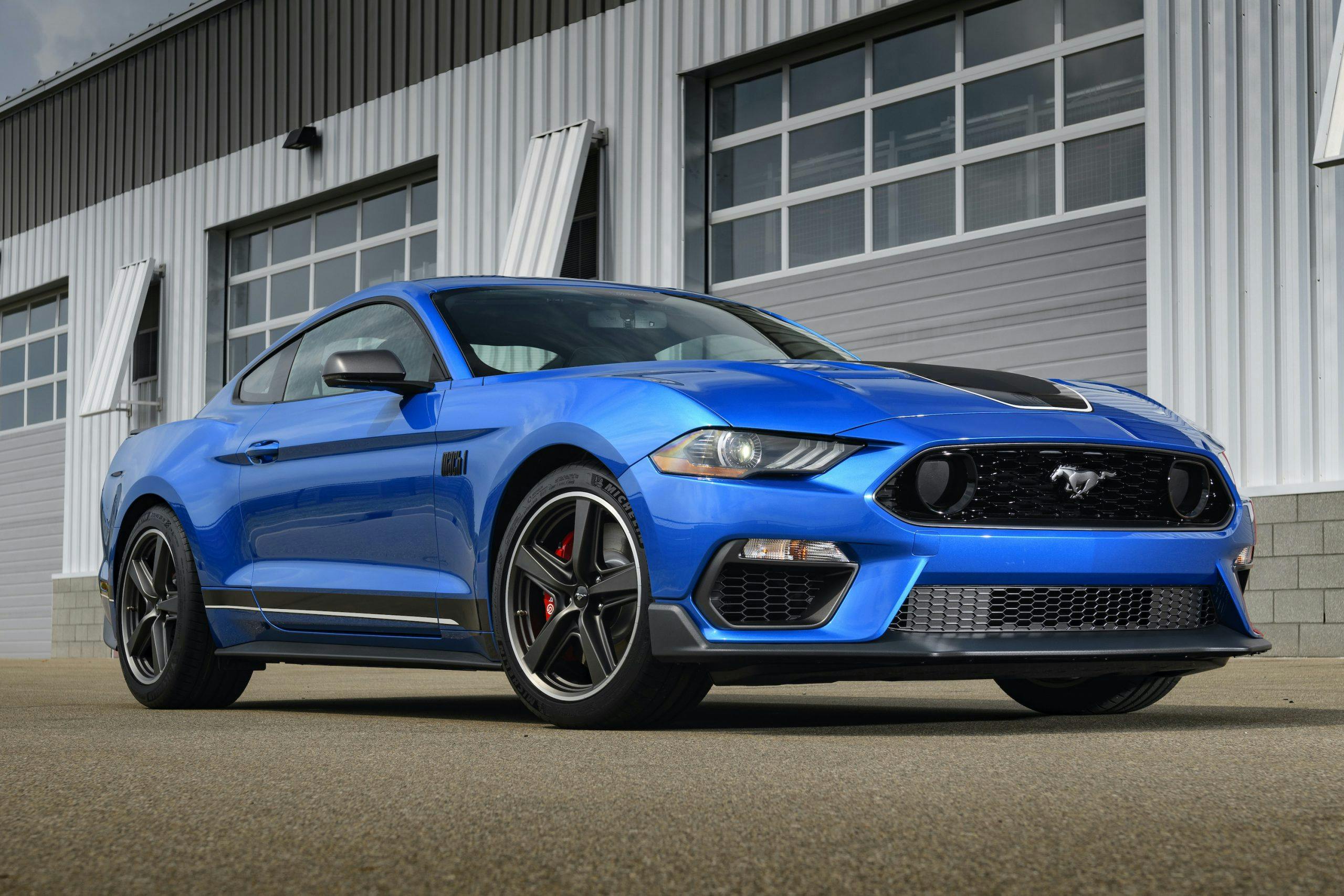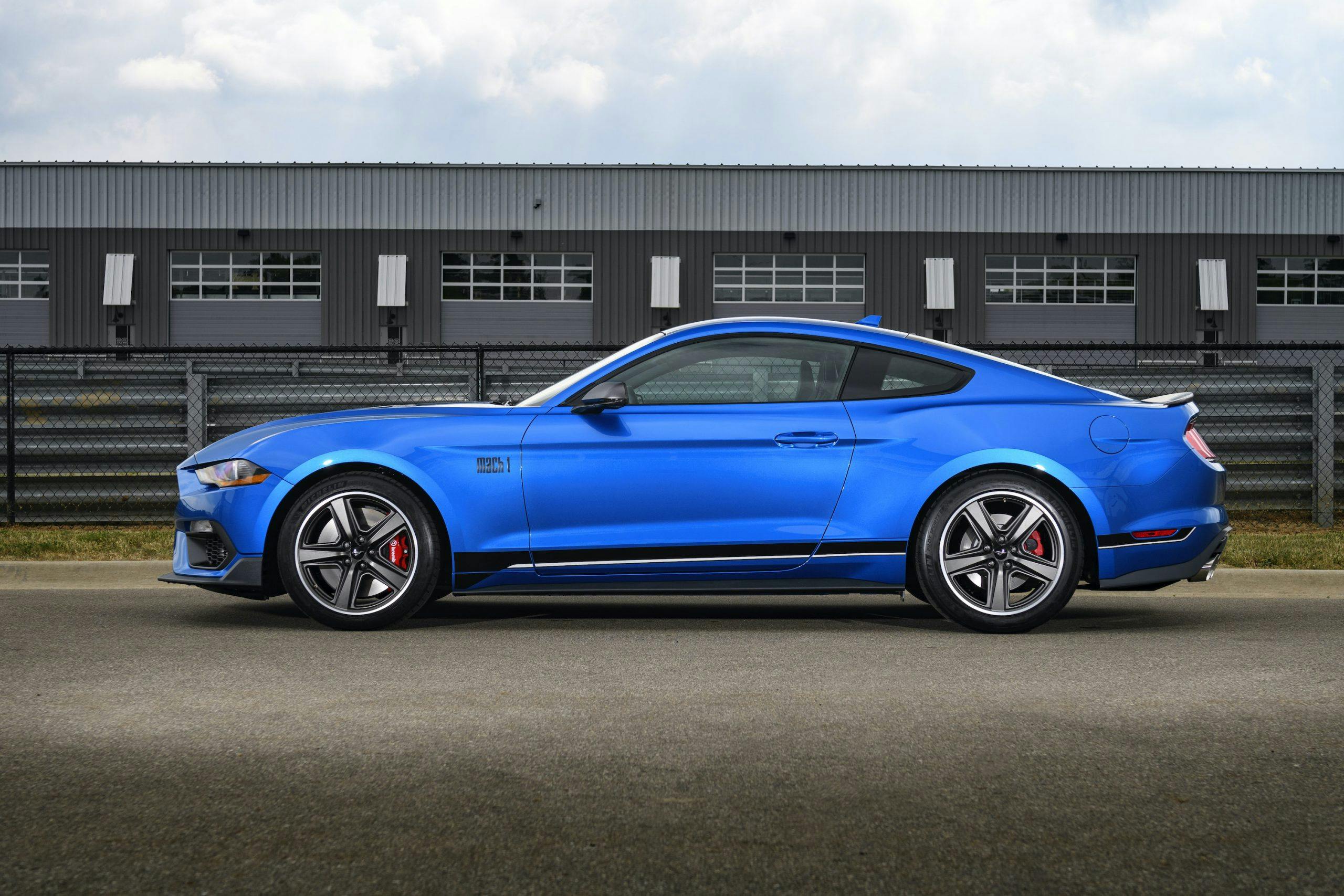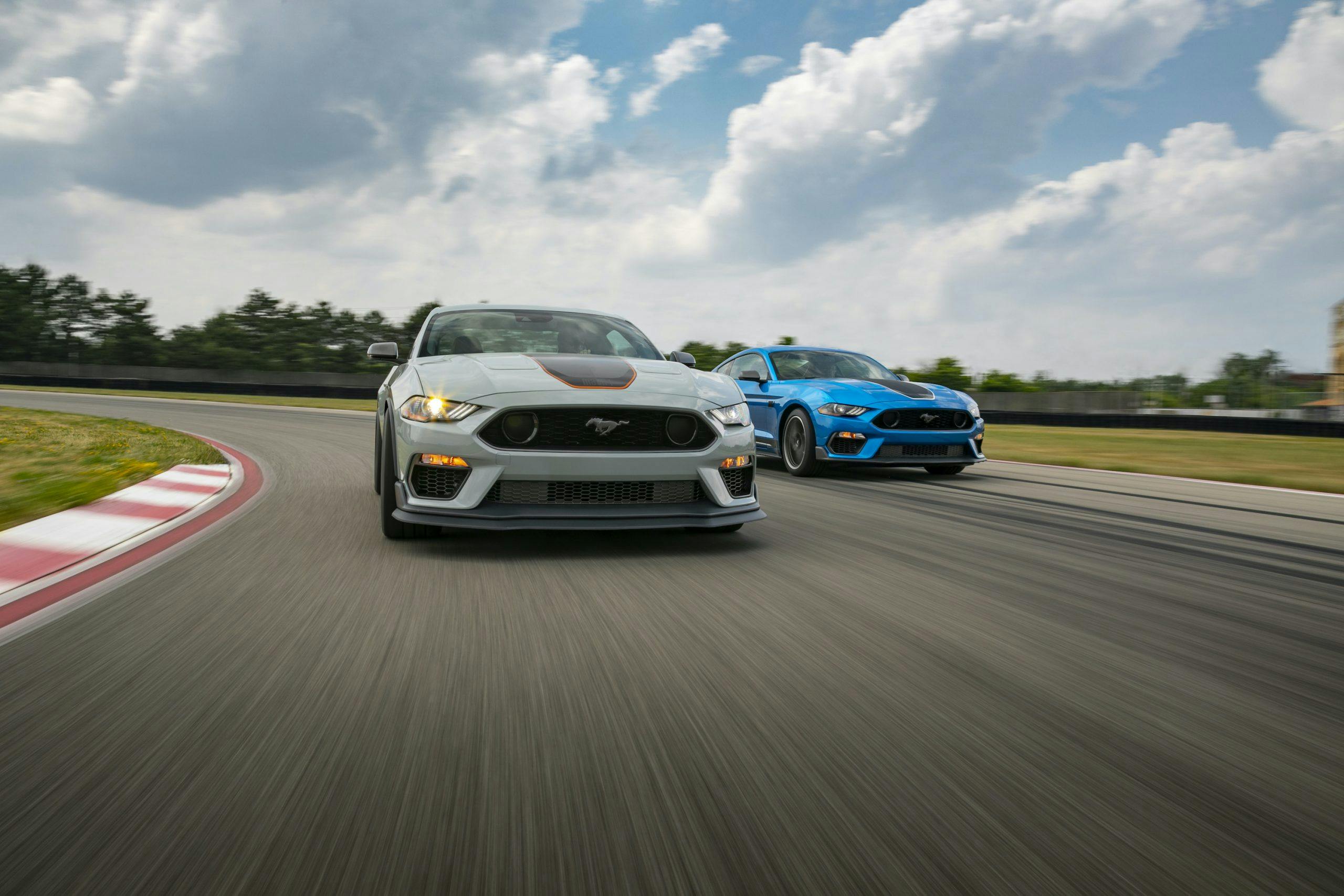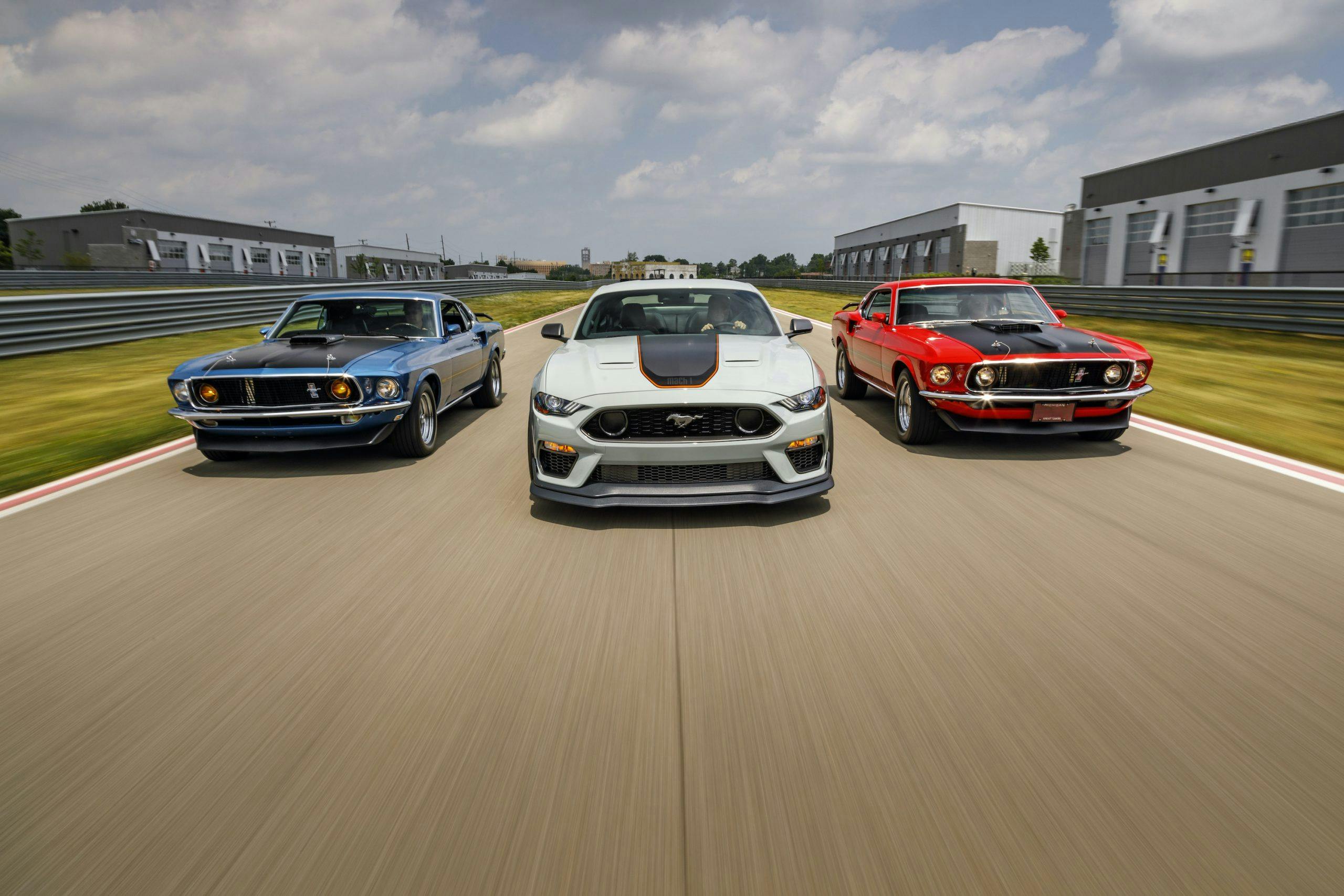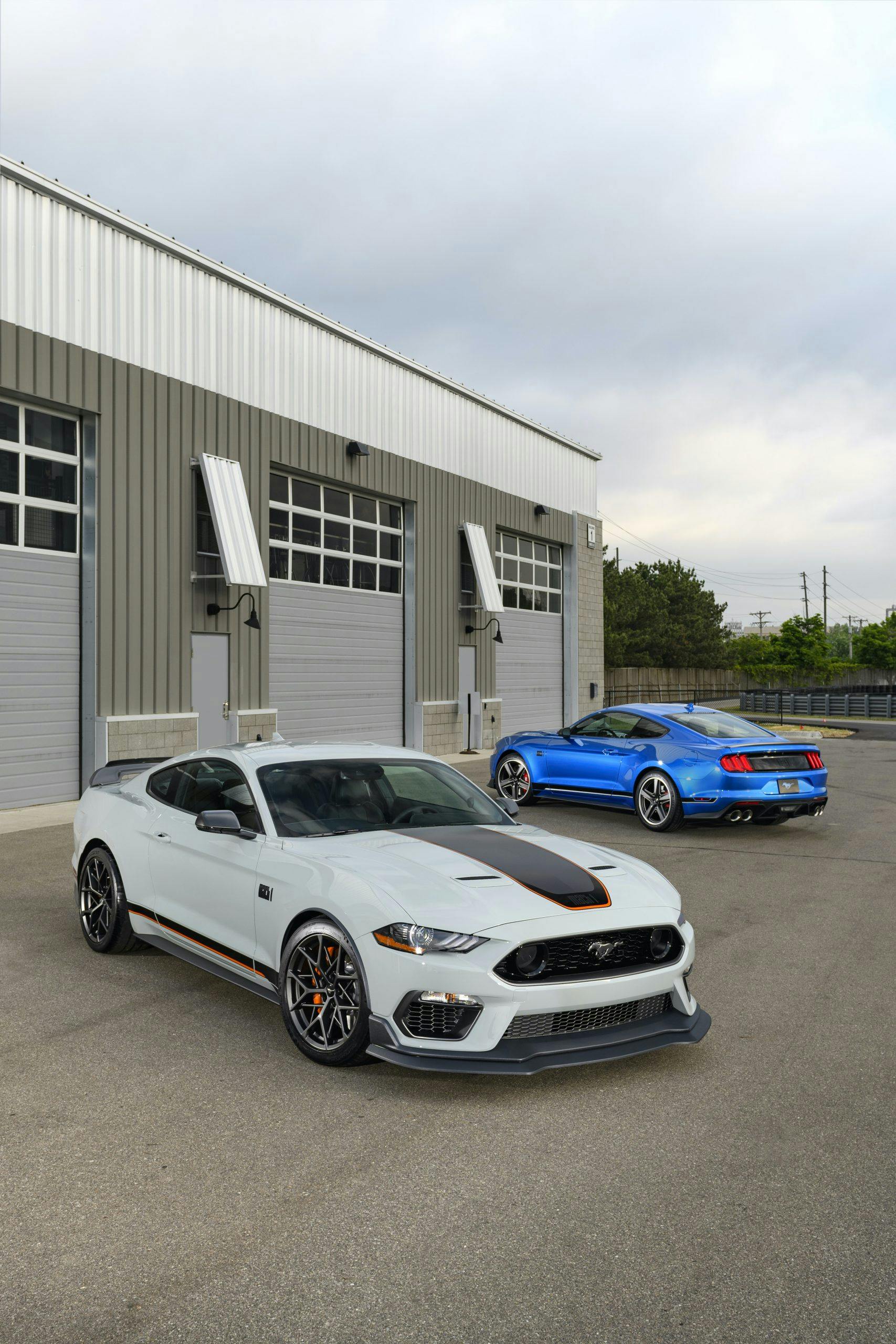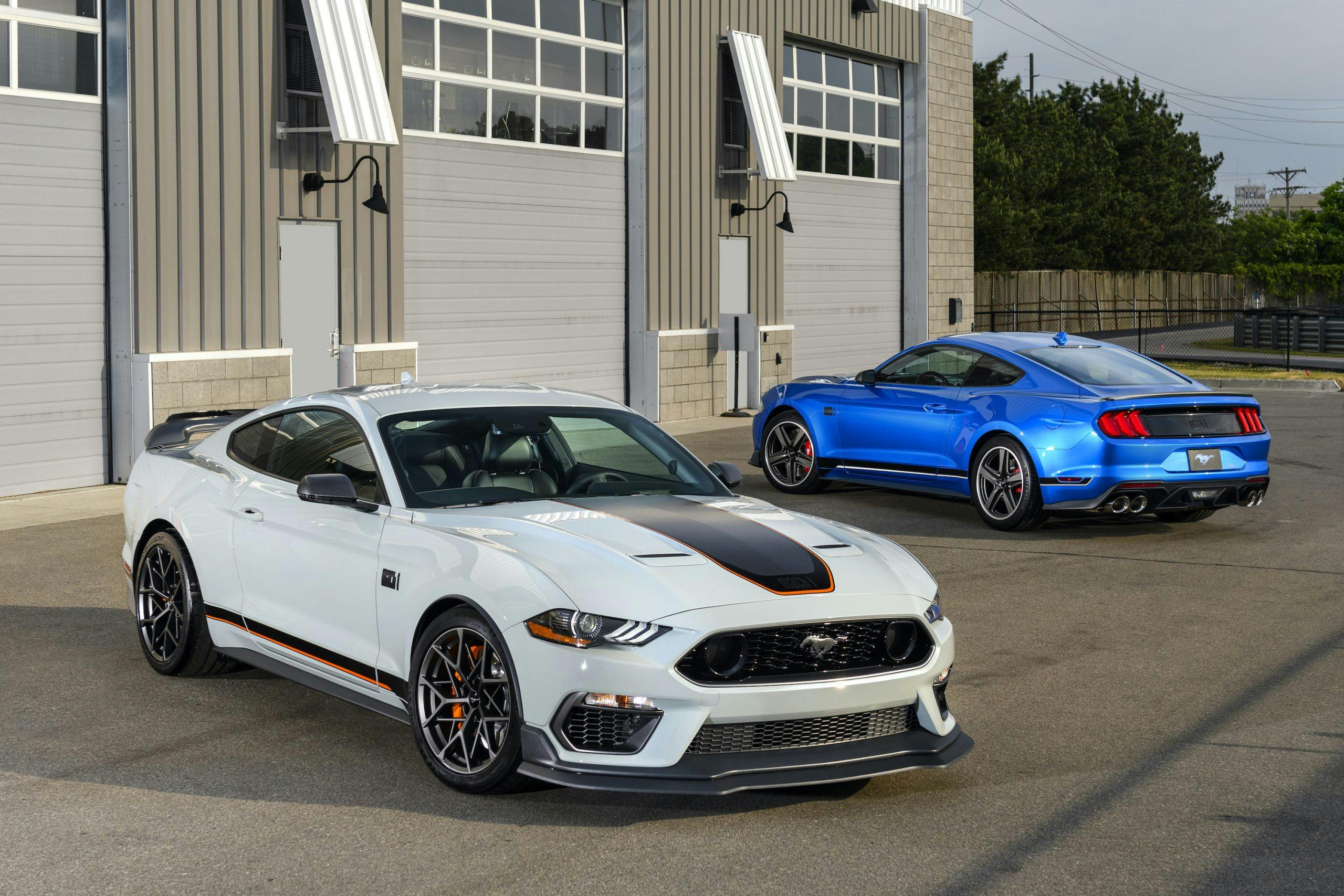Revealed: 2021 Ford Mustang Mach 1
This most auspicious of days in Ford’s history—the anniversary of the company’s founding in 1903—is not passing this year without a bit of fanfare. Ford is officially announcing that, after 17 years, the Mach 1 Mustang is back. Wedging its way into the pony-car lineup between the GT and the Shelby GT350, this latest high-performance pony is meant to be the ultimate 5.0-liter Mustang. With a bevy of chassis and aero upgrades, some of which hail from the Shelby parts bin, Ford promises this Mach 1 will do right by the legendary model that first took to the street and track in 1969.

What maketh a Mach 1 in the 21st century? Let’s start with what’s under the hood. All Mach 1 Mustangs will come with a 5.0-liter Coyote V-8 good for 480 hp at 7000 rpm and 420 lb-ft of torque at 4600 rpm. According to Ford, it’s essentially the same revised Mustang GT motor as in the outgoing Bullitt, albeit with a slightly different ECU tune. GT350 bits include the intake manifold, oil filter adapter, and engine oil cooler, which all together improve engine oil cooling by 50 percent compared to the standard GT. The Mach 1 will also get two side heat exchangers, one for engine oil and the other for transmission oil, in addition to a rear axle cooling system. The Mach 1 also adds a lower diffuser and rear tire spats sourced from the GT500.
A six-speed Tremec 3160 manual transmission from the GT350 is standard, offered for the first time with rev matching, but you’ll have the option of a 10-speed automatic. The automatic, which is also used in the Mustang GT and F-150, receives an upgraded torque converter and unique tuning for the Mach 1, along with a secondary air-to-oil cooler to enhance cooling capacity by 75 percent.
As for handling, the Mach 1 will ride on standard MagneRide dampers with a unique calibration. Ford also stiffened the steering I-shaft, added stiffer sway bars and front springs, included the GT350’s front and rear subframe and its stiffer bushings, and rounded out the upgrades with the GT500’s rear toe link. The Mustang GT Performance Pack Level 2 donated its brake booster for use in the Mach 1, and the newest fire-breathing pony will also get a unique electronic power steering calibration.
As indicated in earlier spy shots of camouflaged prototypes, the Mustang Mach 1 starts with the car’s all-new front end. The nostril-like faux lamp elements are the obvious nod to the original Mach 1’s look, but loyal fans may be disappointed to learn that the 2021 iteration does not have a shaker hood. (Ford says that including one would have compromised the engine’s cooling.) Still, the Mach 1 wears plenty of bespoke pieces. The two-piece upper grille, lower grille, lower valence, and side grilles are all unique to this model and optimized for increased airflow and cooling. In concert with the Performance Pack Level 2 rear spoiler, these upgrades improve downforce by 22 percent compared to the Performance Pack Level 1 Mustang.

Ford stresses that the Mach 1’s most significant aerodynamic improvement is a new underbelly pan, which extends 20 inches farther toward the car’s rear than that on the GT Performance Pack Level 1 and increases and smooths airflow underneath the vehicle. “Large underwing features in the belly pan increase downforce, while special belly pan airfoils in the brake cooling ramps improve downforce and assist the brake cooling flow—a first for Mustang,” Ford says.
Another Mach 1 first is the addition of an optional Handling Package, intended to transform the pony car from a fearsome street performer to a track-capable machine that can more than hold its own on a road course. For starters, this basket of handling goodies comes exclusively with a manual transmission. Up front, the Handling Package adds an extended front splitter for additional downforce, new front wheel lip moldings, and the GT500’s Gurney-flap-equipped swing spoiler. Compared to the Performance Pack Level 1, downforce is up 150 percent. While the standard Mach 1 arrives with 19-inch five-spoke aluminum wheels (9.5 inches front/10 inches rear) and Michelin Pilot Sport 4 tires, the Handling pack swaps those out for wider wheels (10 inches front/10.5 inches rear) and Michelin Pilot Sport Cup 2 tires. Those looking for maximum track performance can also opt for 20-inch wheels (10.5 inches front/11 inches rear).

The base Mach 1 should still be plenty entertaining on the street, but there’s no question that the Handling Package’s aero and cooling improvements will make a massive difference on the track.
Since the Performance Pack Level 2 was already a reasonably capable track Mustang, you might be wondering how the Mach 1 compares. “This car has a much bigger aero package than any of the GT cars,” says Ford Performance marketing chief Jim Owens. “From the front end to the subframe and stiffer springs, everything has been engineered specifically to the aero, tires, and engine. This is not a PP2 [on top of] the upgraded 5.0-liter.”
Though Ford’s engineers put to use lessons learned from the Shelby GT350 and GT500 programs to develop the Mach 1’s specific design and capability, this Mustang is still very much the bridge between the GT and the Shelbys. “The GT350 and GT500 are what they are,” Owens noted.
There should be no mistaking the Mach 1 on the road. In addition to the recognizable front end, the Mach 1 adds fender and trunk badging, low-gloss Magnetic gray mirror caps, a Magnetic pony logo in the grille, and ten paint options. The available Appearance Package adds Satin Black side and hood stripes that can be accented in Red, White, or Orange; the latter matches nicely with the Mach 1’s orange-painted brake calipers.
Inside, the Mach 1 comes standard with a Dark Spindrift instrument panel with aluminum accents, the Bullitt’s cue-ball shift knob, and a cloth interior. Mach 1-themed touches abound: the door sill plates, splash screen for the 12.3-inch LCD all-digital instrument cluster, and the serialized chassis number badging on the passenger-side dashboard. Leather seating surfaces come with the 700A package, and those chairs add an accent stripe meant to draw a connection with the original Mach 1’s SCCA racing heritage.
Arriving in spring of 2021, the Mach 1 will be a non-limited production vehicle, which means Ford will build as many examples as it can sell in global markets, including those that require right-hand drive.
“This is one of those special Mustangs that truly brings a smile to the faces of our owners, enthusiasts and fans—including me,” says Ford Chief Operating officer Jim Farley,” so there’s never been a better time to bring back Mach 1 and have it go global too.”
Considering the bewildering variety of high-performance Mustangs that will be available, from the four-cylinder High Performance Package to the supercar-slaying GT500, the Mach 1 is a welcome addition, with a famous name to boot. We can’t wait to drive it and see whether it’s the game-changing secret sauce that Mustang fans first knew in 1969.

